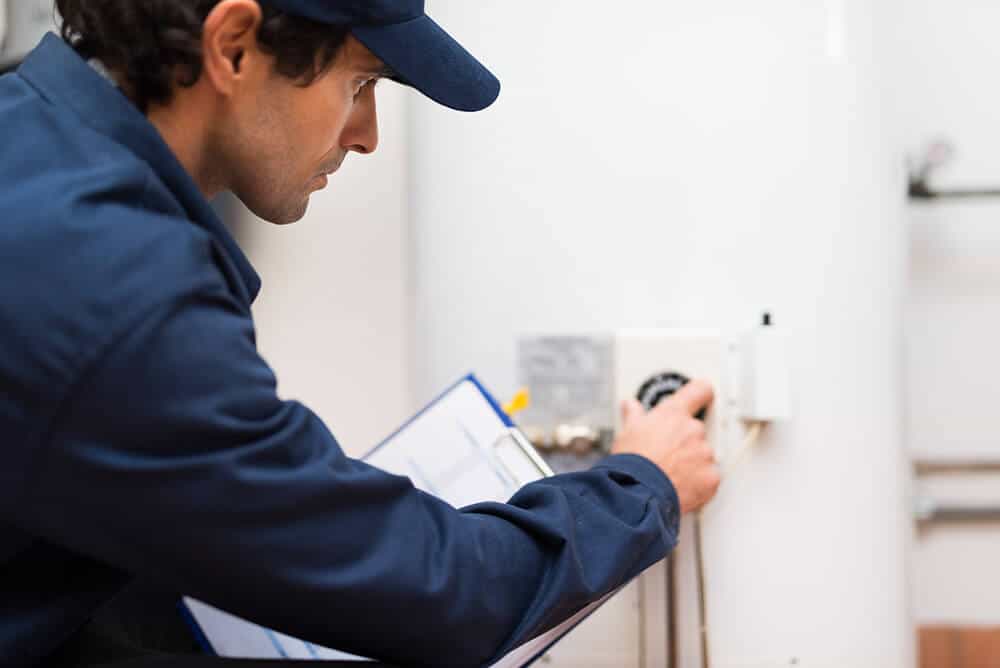When it comes to appliances, it’s easy to take your water heater for granted. It’s one of those household devices that can do its job for years without any malfunctions.
But like most machines, a water heater requires routine care to extend its lifespan and maximize its efficiency. Although your hot water tank keeps water flowing for years, it may cause your electricity bills to go higher or cause damage to your pipelines and water system if it’s not properly maintained.
The best way to protect your appliance and take care of your home is to have the water heater tank checked by a professional plumber. A knowledgeable plumber will inspect the tub for corrosion, replace the anode rod, inspect the valves, and flush your tank.
While it is good to have a licensed plumber checking your water heater, learning how to clean and care for your appliance correctly goes a long way towards maximizing its energy-efficiency.
Keep reading to find out how to drain a hot water tank, what to expect, and how often you should do it.
What Do You Need to Drain Your Water Tank?
Before you drain your hot water tank, have the following items on hand to make the process easier.
- Old towel – You are working with water, so don’t act surprised if you get a little dirty. Have an old towel to wipe your hands from time to time.
- Garden hose – The longer the hose, the easier the project will go. Plumbers recommend expandable garden hoses because they are longer and make the process mess-free.
- Flathead screwdriver – If there is no handle on the valve of the tank, a flat head screwdriver will be of great assistance.
Need help replacing your water heater? Contact MT Drains
Our team of experts have been servicing Vaughan and the surrounding area since 1991.
How to Drain a Hot Water Tank
Although it sounds complicated, it’s actually fairly easy to drain a water heater. All you need to do is follow our instructions.
Step 1:Turn Off the Water Supply
Find the supply shut-off valve (located between the water and main supply line) and turn off the water supply to your heater.
Step 2: Turn Off the Water Heater Thermostat
There are two types of heaters – electric and gas-powered heaters. If you have an electric heater, shut off the power. If you have a gas heater, shut off the gas.
Next, use the valve in the cold-water pipe to shut off the water supply. Test the water faucets in your utility room to make sure the water pressure is off.
Step 3: Connect a Garden Hose to the Hot Water Tank
Find the tank drain valve (located at the bottom of the hot water tank) and attach a garden hose to it. Older tank models may have a cover over the tank drain valve. Remove the cover and place the other end of the garden hose on a driveway or lawn where it can flush safely.
Step 4: Open the Faucets
Open all water faucets in your home to speed up the water drain process.
Step 5: Open the Heater’s Drain Valve
Open the heater’s drain valve and watch the water drain from the hot water tank. Be aware that the water will be hot, so make sure to keep away your children and pets away from it.
If you open the valve and there is no water flow, the chances are there is too much sediment. In this case, you need to open the thermostat to let off tank pressure and drain any water that’s left. Next, use your vacuum to remove any blockages from the valve and get the water going.
Step 6: Turn the Cold Water Back On
Turn the water supply back on to wash off any sediment left in the tank. Check the end of the garden hose to see when it runs clear water, then turn it off. Disconnect the garden hose, and if you notice sediment around the opening, use the vacuum to extract it.
Close the valve and turn the cold water back on.
Step 7: The Hot Water Tank Will Start to Fill
Leave the faucets on until you see clear water (after a minute or two) and turn the faucets back off. Don’t be surprised if you notice sediment or rust coming out of the faucets.
Step 8: Reset the Thermostat
Once the tank is full, you should have hot water in less than 30 minutes (depending on the size of the heater). Check the valves to make sure there are no leaks.
In some cases, you won’t be able to close the valve fully. That’s usually because it has been sitting for months, and the older it gets, the more difficult it will be to close it.
The best way to prepare for a leak is to put a cap over the drain valve. If you want to avoid any leaks, ask your plumber to replace your drain valves.
How Often Should You Drain Your Tank?
The best way to prepare for a leak is to put a cap over the drain valve. If you want to avoid any leaks, ask your plumber to replace your drain valves.
Why Drain Your Tank?
Over time, the hot water tank deteriorates and releases decay and rust into the water. Corrosion build-up impacts the water heater’s function, making it more challenging to reach the desired temperature. The longer it takes for your tank to heat water, the higher your electricity costs will be.
Get a Professional Help
Draining a hot water tank isn’t hard, but it can be time-consuming. If you would rather spend your free time with your family, get professional plumbers to drain your hot water tank.
No matter how dirty your tank is, MT Drains & Plumbing is here to make sure your appliance functions like new. If it is a time for cleaning, we are available 24/7. Our team of professional plumbers will come, inspect the problem, and fix any damage quickly and efficiently.






